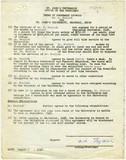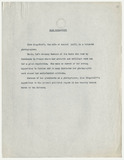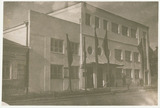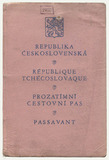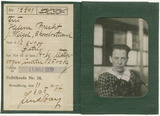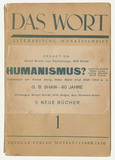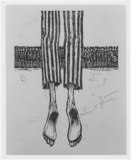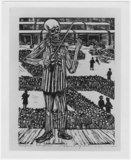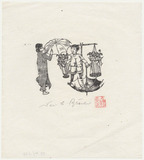Contract between the architect Richard Paulick and St. John's University Shanghai (1946)
From the winter semester in 1943 to the end of the summer semester in 1949, the architect Richard Paulick taught interior design and urban planning at St. John's University in Shanghai, which had been founded by American missionaries in the late 19th century.
Curriculum vitae of Ilse Bing (1940)
When the Emergency Rescue Committee attempted to help the photographer Ilse Bing get an emergency visa for the USA in September 1940, the aid organisation had to provide a curriculum vitae for Bing as part of the application documents. The entrepreneur Gerardo E. Neisser, a friend of Bing’s husband Konrad Wolff, sent this CV along with a financial guarantee. Curt Trepte: The Deutsche Staatstheater (German State Theatre) in Engels, photograph (circa 1936)
Erwin Piscator’s emigrant theatre in the years 1935 to 1936The Soviet city Engels, capital of the Volga German Autonomous Soviet Socialist Republic, had a large theatre, the Deutsches Staatstheater from 1931 with seating for an audience of 800. The director Erwin Piscator had the idea of establishing a centre for German-language emigrant theatre there.
Czechoslovakian alien's passport for Oskar Maria Graf (1938)
Oskar Maria Graf was stateless for twenty-four years, from his expatriation from the German Reich on 30 March 1934 until he was conferred American citizenship in 1958. Although he was tolerated in the US and Czechoslovakia, the countries of his exile, he was unable to travel to other countries and could not expect to be let back into these countries after he had left them.
Danish driving license of Helene Weigel (1934)
Even in exile, the actress Helene Weigel organised everyday family life largely on her own. In June 1933, while her husband Bertolt Brecht stayed in Paris for rehearsals, she travelled with her two children and housekeeper by ship to Denmark via France, Belgium and the Netherlands.
Das Wort. Literarische Monatsschrift (1936 – 1939)
Das Wort was founded in 1936 in Moscow as a new exile literary magazine, after Die Sammlung (Amsterdam) and Neue Deutsche Blätter (Prague), both 1933-1935, had ceased publication. It was issued monthly from July 1936 to March 1939 with a circulation of 5000 to 7000 copies by the Jourgaz publishing house of Mikhail Koltsov.
David Ludwig Bloch: Hanging, linocut (1977-1980)
The observer sees a close-up of the hanging feet of someone who has been executed. A faceless mass of people witnesses the anonymous death.
David Ludwig Bloch: Reception-Deception, linocut (1977-1980)
Reception-Deception is part of a series of pieces about the Holocaust, created by painter David Ludwig Bloch in America forty years after his imprisonment in Dachau. He also uses the motif in a painting with the same name.
David Ludwig Bloch: Schirmverkäufer [umbrella salesman], woodcut (1948)
This woodcut is from the Yin-Yang series, which the painter David Ludwig Bloch made in 1948 during his exile in China. In Chinese philosophy, the two terms describe the balance that exists between two opposing forces which are nonetheless interrelated.
David Ludwig Bloch: Shanghai Ghetto, wood carving (1946)
This emigrant in Shanghai's ghetto is surrounded by a confusing jumble of regulations for stateless refugees. He is presenting his identity papers tightly enclosed by phrases in italics such as “Designed Area”, “Punishment” or “Extension” that seem to narrow his path.
